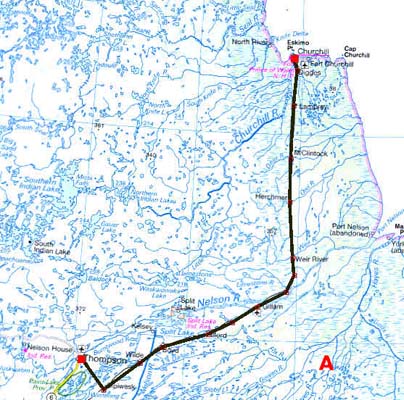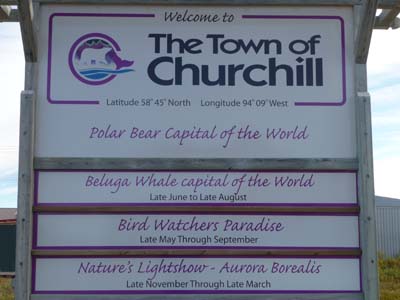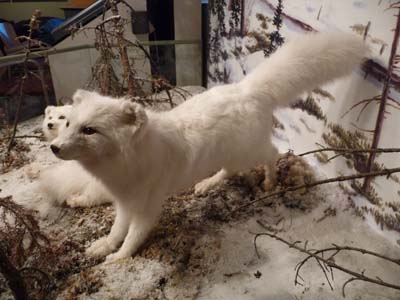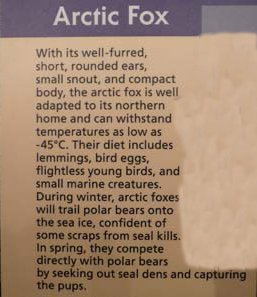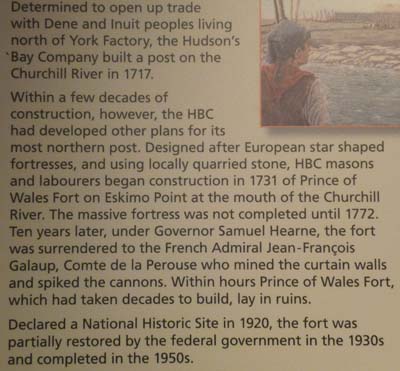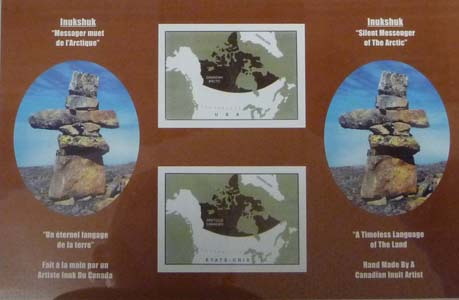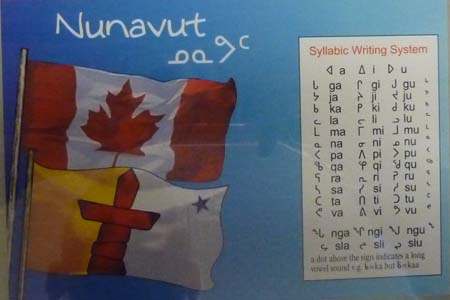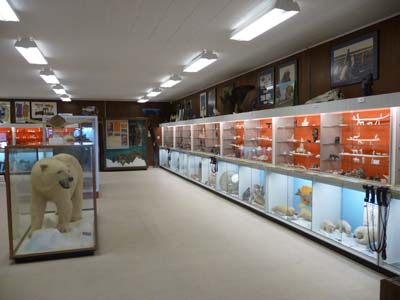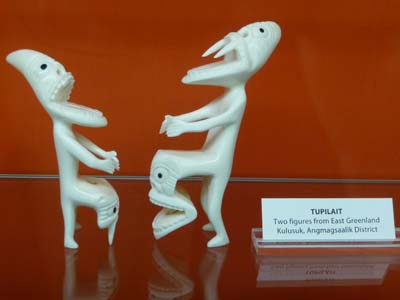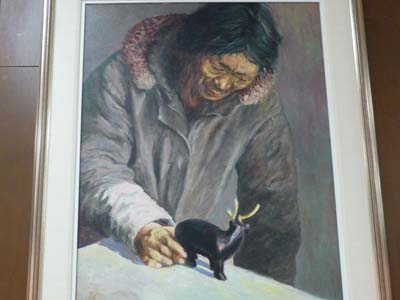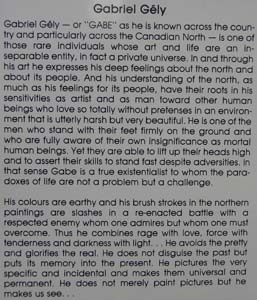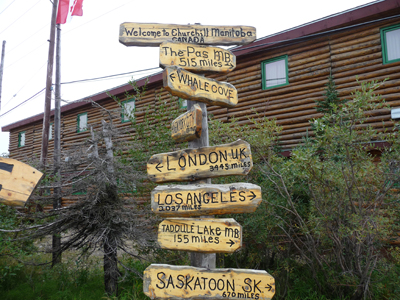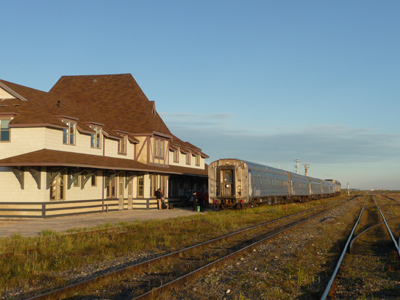Thompson, Train station
On Monday, September 3, day of my
departure by train to Churchill, I took
possession of my cabin in a sleeper. The
bed is in longitudinal position in the
direction of the way and this of my cabin
is partly under the elevated cabin in the
front. In night position the bed is drawn
to the bench masking the WC. The train
left Thomson on time, 5 pm, crossing the
tundra under an overcast sky and a small
drizzle. It stopped in villages when there
were travellers to unload. It is a one way
with old rails of short size and spanned
transverse junctions making the bearing
noisy, moreover there were earplugs
in the cabin.
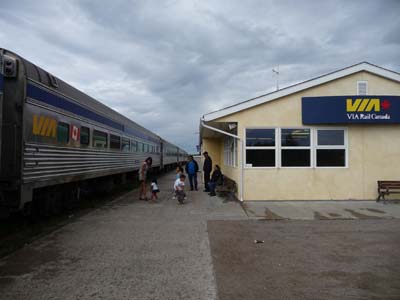 |
 |
| Train Station at Thomson |
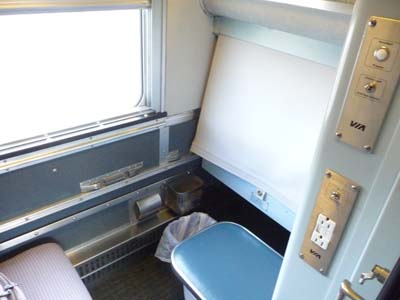 |
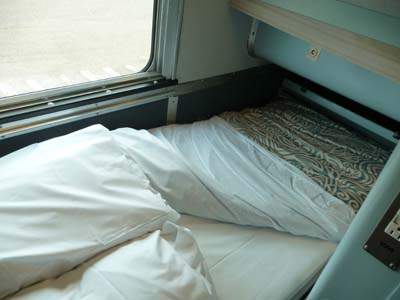 |
| My cabin in the
sleeper |
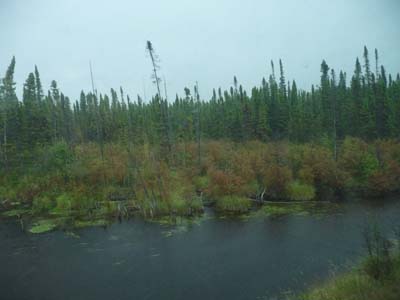 |
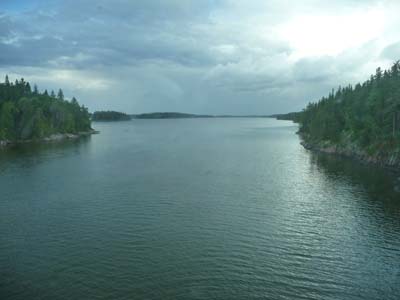 |
| Landscape |
 |
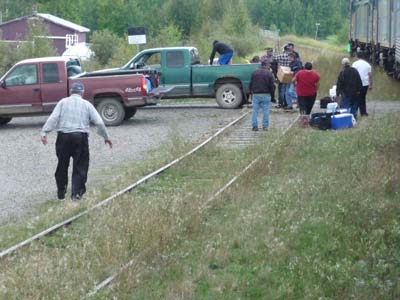 |
| Stop in the tundra |
Churchill, Train station
The arrival at the train station in
Churchill was carried out with a quarter
hour of delay, that is to say 16 hours 15
for around 550 km with an average of 40
km/h. Weather in Churchill at the Hudson
Bay seashore is identical to that at
Thomson, overcast, misty and a temperature
of 9°C. Two couples of tourists and I
unloaded with some local people what did
not forecast anything good. I made my
shopping of booklet at Parks Canada
installed in the train station before
taking the Tundra hotel Inn minibus. The
room is roomy with two matrimonial beds
and a good-quality Wi-Fi access.
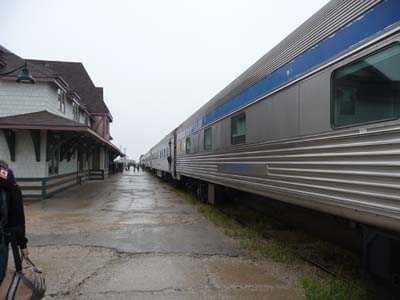 |
 |
| Train station at Churchill |
Either too late or too early
In the early afternoon I took my marks in
the city by visiting the tour operators to
go & see the two main sights announced
and accessible in this season according to
the website of Parks Canada. My
disappointment was worthy of my waiting.
Prince of Wales Fort requires a guided
tour which is not organized for lack of
customers. York Factory located at 250 km
was reachable only by helicopter @ 5,000 Canadian dollars for four
people, i.e. at a too expensive price for
me, even if I found three other people. I
returned disappointed to my hotel. To
worsen my disillusion I read again the
booklet by Parks Canada.
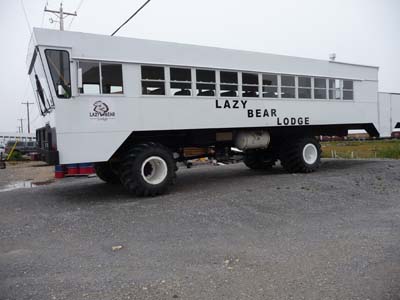 |
 |
| Tundra & snow vehicles |
The geological evolution of permafrost has
let appear obviousnesse's aboriginal
presence for more than 3000 years. The
secular opposition between England and
France in particular in the will to
dominate the fur trade involved the
construction of “Prince of Wales Fort”
after a French attack in 1720. Its
construction lasted from 1731 to 1770
at Cape Merry in the Sloop Cove. The 40-men
garrison could not be opposed to a new French
attack without shot. Only a small portion of the walls
was destroyed. At around 250 km in the
south-east further away from Churchill, “York Factory”
was an immense HBC's warehouse at the time
of the fur trade in activity until 1957
located close to Hayes River. Since 1929
Churchill is the terminal of 820 km Hudson
Bay Rail Line. Churchill closer to Europe
than Montreal became a strategic position
for the export of grains from the
prairie and an American base during the
Cold War. It is regarded as the world
capital of polar bears and belugas. There
are Two tourist seasons: July & August for
belugas then October & November for polar
bears involving an inflation of the hotel
prices. Since my long stay in France I was
in hitch of the tourist periods. I had to
assume this time lag by managing it.
Churchill, Parks Canada Museum
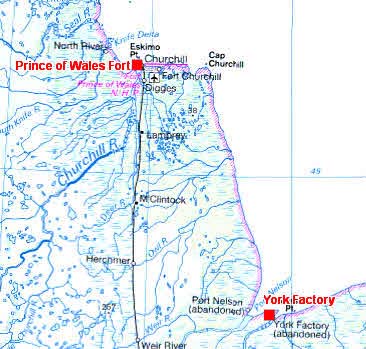 |
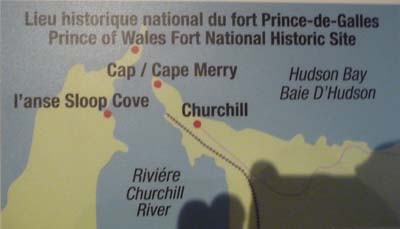 |
 |
| Location of Prince of Wales Fort & York Factory |
On Wednesday the 5th September in spite of a cold
drizzle I leave to return to the
railway station to visit the charming small museum of
Parks Canada while
visualizing videos of local fauna and flora. It introduces without
kindness the wars between British and
French in the area. Then I went at the
edge of Hudson Bay whipped by spray
before returning to the hotel.
 |
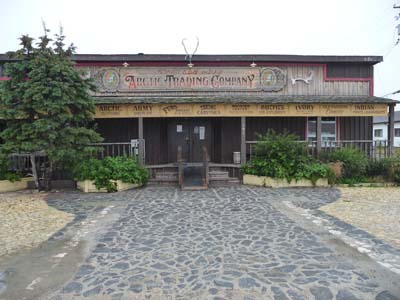 |
| Kelsey Blvd |
 |
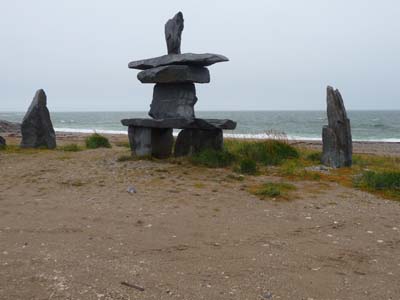 |
| Hudson Bay seashore |
Churchill, Eskimo Museum
Eskimo Museum was created by roman
catholic fathers of the Oblate
congregation dedicated in 1944 to the
Inuit culture. It exhibits sculptures,
tools as well as archaeological artifacts
and specimens of fauna. The emblematic
object of the Inuit, central on the flag,
is "Inuksuk" rock stacking of silent
language in the Arctic landscape. This
eternal language of the country conveys a
large variety of messages for the
traveller, hiding food, hunting
information or signpost to be followed.
Each sculpture is single. This small
museum is organized in 32-window cupboards
exhibiting the objects. Art Inuit was
already well represented by the Museum of
Anthropology -MOA- of Vancouver, BC.
Although the departure of the train was on
time on Saturday at the end of the day, it
arrived at Thompson on Sunday with 30
minutes of delay.
